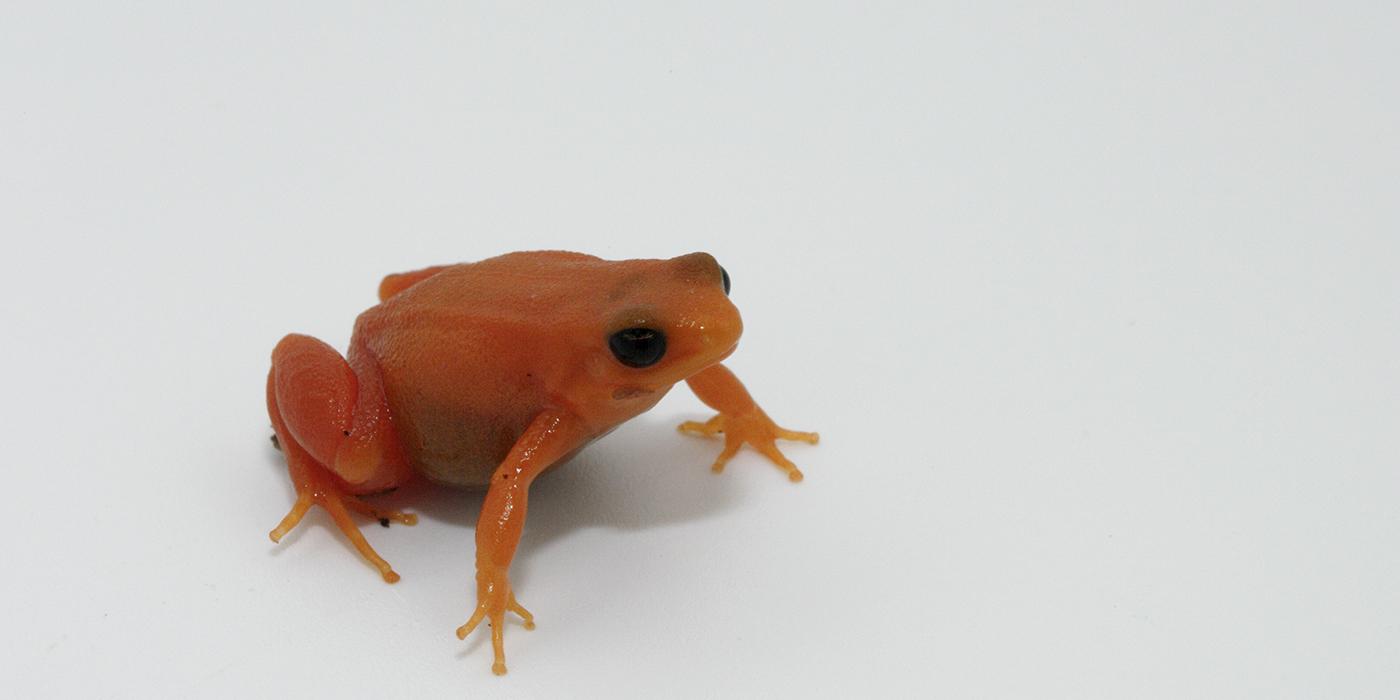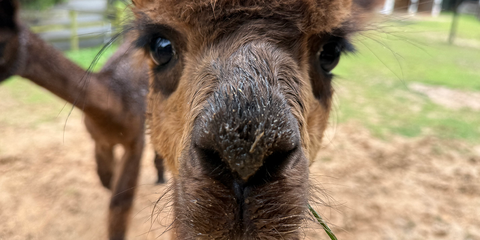Physical Description
Golden mantella frogs are bright yellow, orange or red with some red on the upper surface of the hind legs. They have short legs, and their fingers and toes bear distinct adhesive pads. Their eyes are typically black, although they may occasionally have a little bit of gold in the upper portion of the iris.
Males are typically smaller than females and have a more angular body shape, as well as a lighter colored belly. On males, two pale-colored ducts that carry sperm and urine are often visible passing along the belly. Tadpoles do not have external gills and the eyes are located on the top of the head. Young froglets are olive green with dark marks on the back and dark bands on the hind limbs.
There are two subspecies: M. aurantiaca and M. mylotimpanum. M. mylotimpanum have black earspots while M. aurantiaca does not.
Size
Very small, golden mantella frogs are about 1 inch (2.5 centimeters) long.
Native Habitat
Golden mantella frogs are endemic to central-eastern Madagascar, where it occurs in a highly restricted area at elevations over 900 meters. They live in sunny areas of pandanus forests. They tend to occur amongst vegetation in swampy sites.
Lifespan
The average life span of golden mantella frogs is eight years.
Food/Eating Habits
The golden mantella frog is an insectivorous species, feeding on termites, fruit flies, ants and a huge range of other insects.
At the Zoo, these frogs are fed a variety of insects, including springtails, pinheads and fruit flies.
Sleep Habits
The golden frog is active during the day.
Social Structure
Golden mantella frogs live in groups usually consisting of twice as many males as females.
Reproduction and Development
Breeding tends to start after the first heavy rains of the year, when there is plenty of food. Males attract females with their call. The male rapidly scoots to the female's back, without embracing her. The females lay eggs in damp leaf litter, moss or underbark and rocks next to a water source. Each clutch contains 20 to 60 white eggs, each one measuring up to 0.08 inches (2 millimeters) in diameter. The male fertilizes the eggs immediately.
Two weeks later, the tadpoles hatch out. They either wriggle into water or are washed into small pools by heavy rain. It takes around 70 days for the tadpoles to metamorphose into froglets measuring 0.4 inches (11 mm) long. They acquire their typical yellow-red coloration a few weeks later, and reach sexual maturity 12 to 14 months later.
Conservation Efforts
Golden mantella frogs are critically endangered. This species lives only in a small (less than 4 square miles or 10 square kilometers) fragment of forest surrounded by degraded land. The remaining forest is under threat from subsistence agriculture, timber extraction, fires and expanding human settlements.
Recently, governments have begun limiting the exportation of animals, which has greatly reduced trade.
Help this Species
- Choose your pets wisely, and do your research before bringing an animal home. Exotic animals don’t always make great pets. Many require special care and live for a long time. Tropical reptiles and small mammals are often traded internationally and may be victims of the illegal pet trade. Never release animals that have been kept as pets into the wild.
- Are you a student? Did you love what you learned about this animal? Make it the topic of your next school project, or start a conservation club at your school. You'll learn even more and share the importance of saving species with classmates and teachers, too.
- Less is more. Cut down on the demand for resources by consuming less. Buy only what you need, and look for pre-owned or repurposed items before purchasing something brand new.




